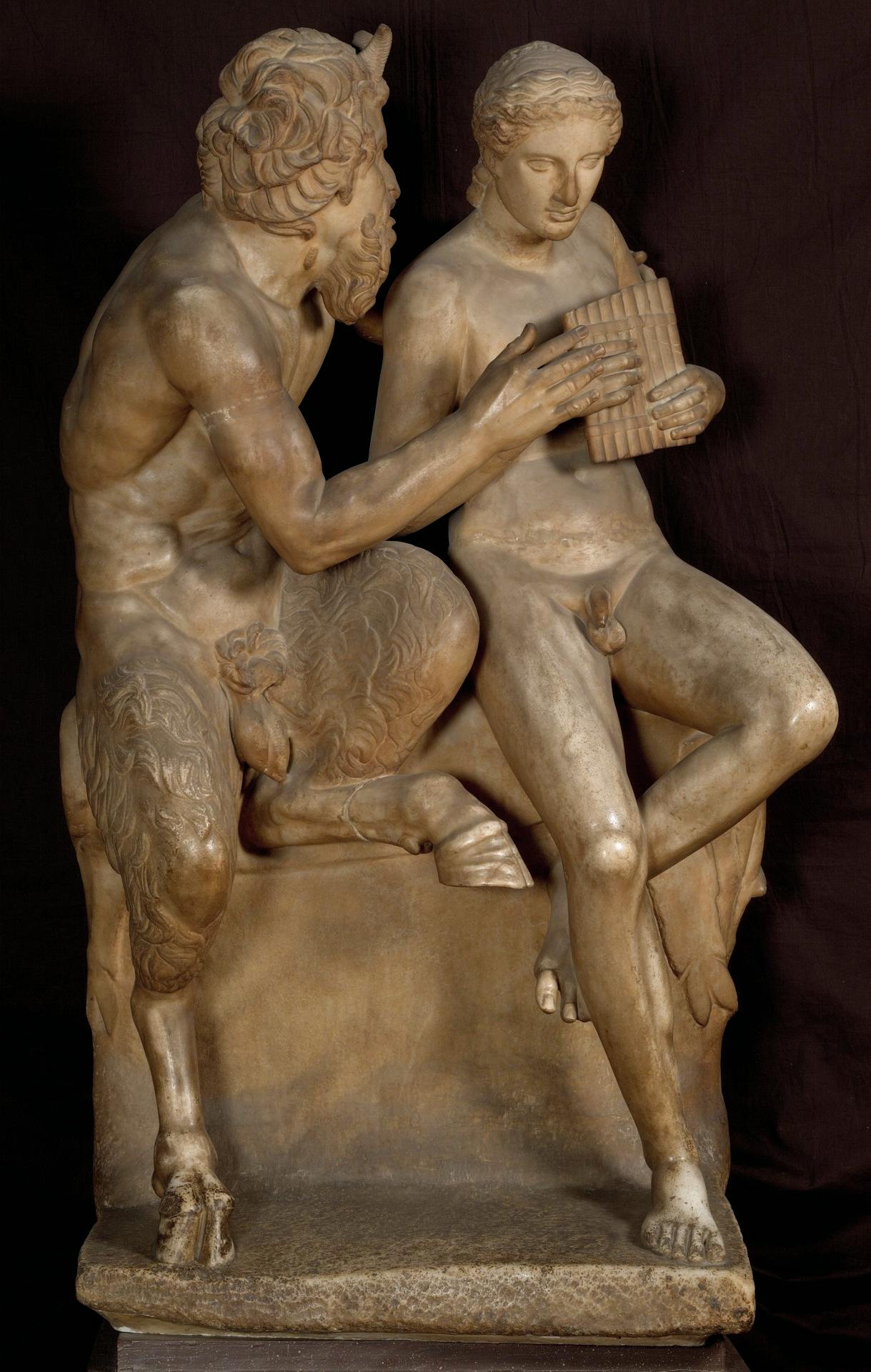Group of Pan and Daphnis
Roman art
The history of this sculpture is rather obscure: it is not known where it was found, having been in the Villa Medici in Rome since 1722 and moved to Florence in 1787. The pair of figures represents the god Pan, with goat-like features, seated beside the shepherd Daphnis, intent on playing the pan flute. Daphnis, son of Hermes and the nymph Daphne, embodies, in Greek myth, the ideal of the eromenos, the child of unparalleled beauty capable of fascinating every man or divinity. In addition to Apollo, Daphnis was also Pan's lover who, in this group, encircles the young man with his left arm, while with his right arm he seems to guide him in the use of the instrument. In the figure of Pan the left paw, the horns and both arms are integrated, while in Daphnis the left arm with the pan flute, the right hand and some parts of the head are noteworthy. Several replicas of this group are known from literary sources and archaeological finds, the original of which was perhaps attributable to late Hellenism. The erotic character, however, gives way here to a more complex series of references, including the themes of nature, bucolic poetry and tragic death.
A. Romualdi (a cura di), Studi e restauri. I marmi antichi della Galleria degli Uffizi, II, Firenze, Polistampa, 2007 (con contributi di B. Arbeid, Gruppo di Pan e Dafni, pp. 154-161; M. Ricci, Il restauro, pp. 162-165) e bibliografia precedente.
